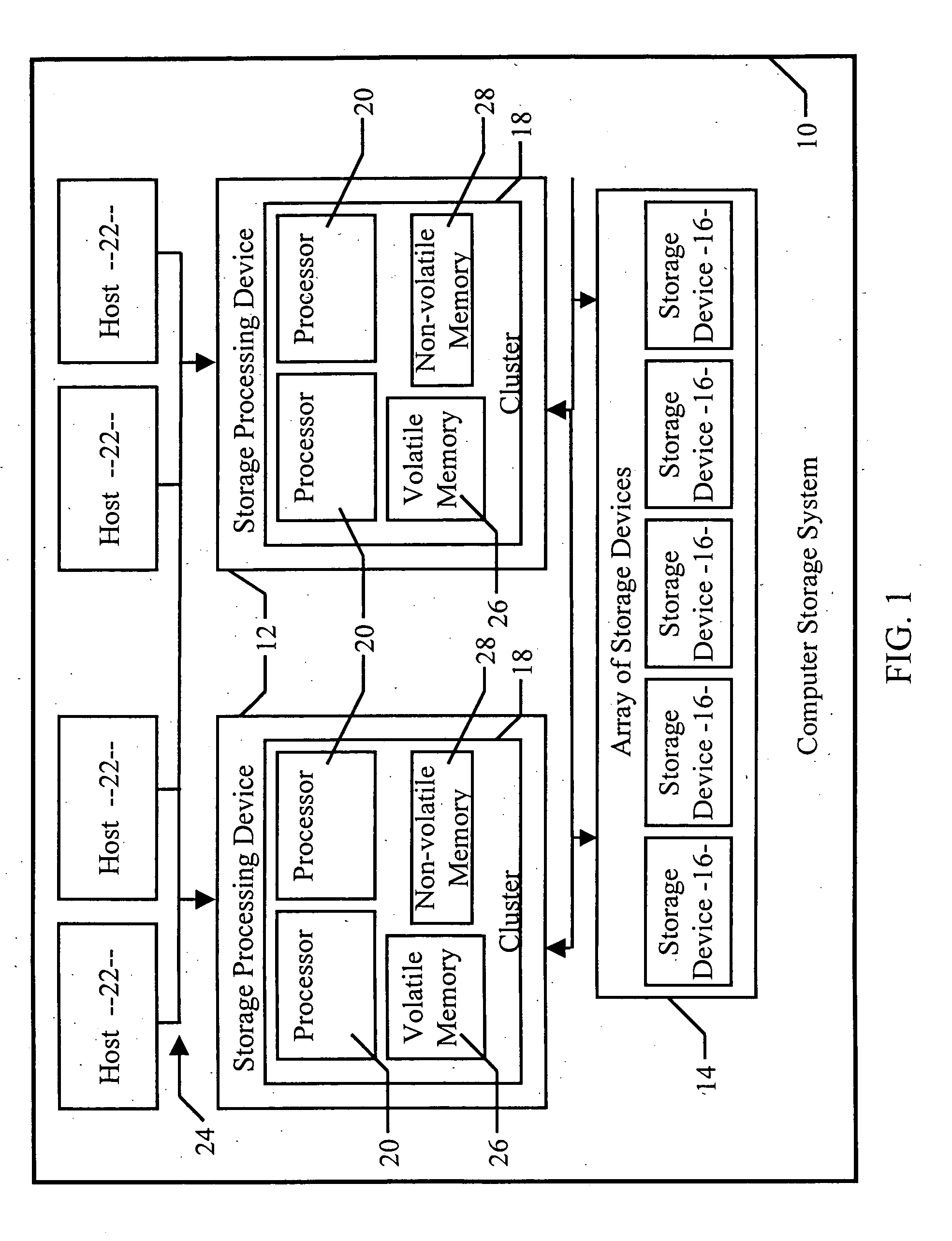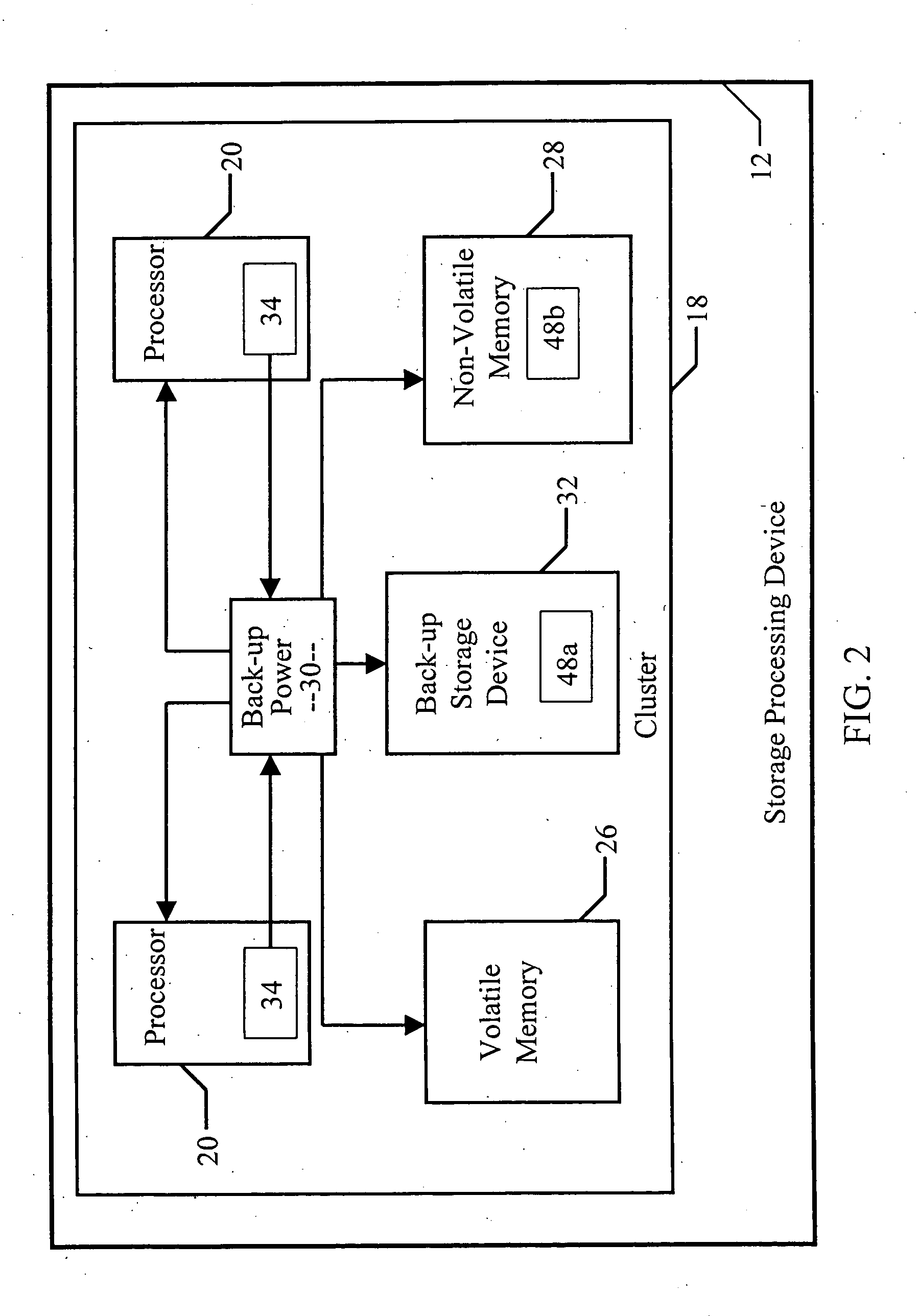Scanning modified data during power loss
a technology of modified data and power loss, applied in the field of data storage in computer systems, can solve the problems of data corruption, permanent loss of information, and relatively fast read/write caches
- Summary
- Abstract
- Description
- Claims
- Application Information
AI Technical Summary
Problems solved by technology
Method used
Image
Examples
Embodiment Construction
[0020] This invention is based on the idea of using a processing device, a back-up power source and a back-up storage device to replicate the contents of a non-volatile memory device from a volatile memory device. Referring to the figures, wherein like parts are designated with the same reference numerals and symbols, FIG. 1 is a schematic illustration of a computer storage system 10 including two or more storage processing devices 12 and an array 14 of high-capacity storage devices 16. Storage processing devices 12 may consist of discrete storage servers or clusters 18 of processors 20. Storage devices 16 may be hard-disk drives, tape cartridges, optical disk drives, or other high-capacity storage elements. Processors 20 may be general-purpose computer processing units (“CPUs”), microprocessors, field-programmable gate arrays (“FPGAs”), complex programmable logic devices (“CPLDs”), application-specific integrated circuits (“ASICs), or other computational device. Accordingly, algori...
PUM
 Login to View More
Login to View More Abstract
Description
Claims
Application Information
 Login to View More
Login to View More - R&D
- Intellectual Property
- Life Sciences
- Materials
- Tech Scout
- Unparalleled Data Quality
- Higher Quality Content
- 60% Fewer Hallucinations
Browse by: Latest US Patents, China's latest patents, Technical Efficacy Thesaurus, Application Domain, Technology Topic, Popular Technical Reports.
© 2025 PatSnap. All rights reserved.Legal|Privacy policy|Modern Slavery Act Transparency Statement|Sitemap|About US| Contact US: help@patsnap.com



